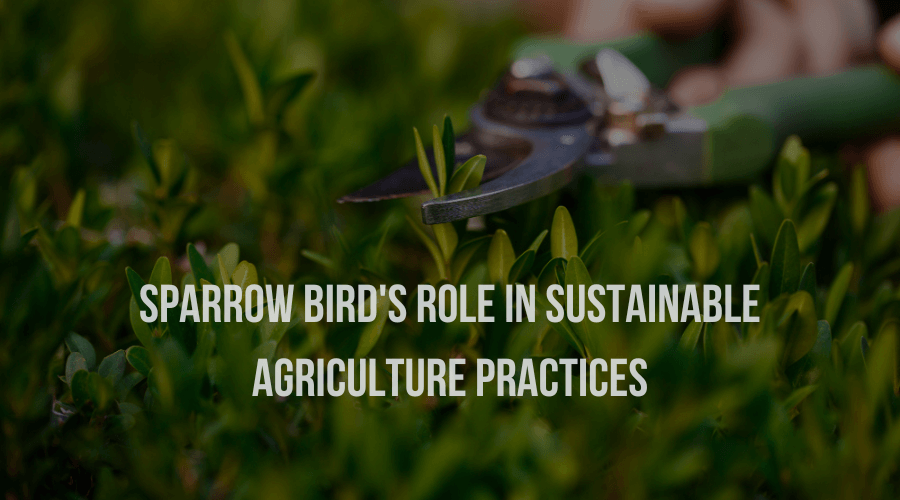Introduction
In recent years, sustainable agriculture has become a hot topic, as the world looks for ways to produce food while preserving natural resources and minimising negative impacts on the environment. One way to promote sustainable agriculture is by encouraging the use of bird houses to attract sparrows to farms. Sparrow bird houses provide many benefits to farmers, including pest control, pollination, and soil conservation. This article will explore the role of sparrow bird houses in sustainable agriculture practices and the benefits they offer.
The Importance of Sparrows in Sustainable Agriculture
Sparrows are small, common birds that are found all over the world. They are highly adaptable and can thrive in a variety of environments, including urban areas, forests, and agricultural fields. In the context of sustainable agriculture, sparrows play an important role in pest control and pollination.
1. Pest Control
Sparrows are known for their voracious appetites, and they feed on a variety of insects and small rodents. This makes them valuable allies in the fight against pests that can damage crops. Sparrows are especially effective at controlling insect pests, such as aphids and caterpillars, which can cause significant damage to crops.
In addition to directly consuming pests, sparrows also play an indirect role in pest control by attracting other insectivorous birds to farms. By providing a habitat for sparrows, farmers can create an ecosystem that supports a diverse range of beneficial birds that help keep pests in check.
2. Pollination
Sparrows are also important pollinators, especially for crops that require cross-pollination. Cross-pollination occurs when pollen from one plant is transferred to another plant of the same species, leading to the formation of seeds and fruit. This process is essential for the reproduction of many agricultural crops, including apples, cherries, and almonds.
Sparrows are particularly effective at cross-pollination because they are small enough to access the flowers of many crops. They also have specialised beaks that allow them to extract nectar and pollen from flowers. By attracting sparrows to farms, farmers can increase the likelihood of successful pollination and improve the quality and quantity of their crops.
3. Soil Conservation
Sparrows can also play a role in soil conservation. They are ground feeders, which means they forage for food on the ground. As they search for food, sparrows disturb the soil, which helps to aerate it and increase its fertility. This can improve the health of the soil and promote the growth of crops.
The Role of Sparrow Bird houses in Sustainable Agriculture
Sparrow bird houses are an important tool for promoting sustainable agriculture practices. By providing a habitat for sparrows, farmers can attract these valuable birds to their farms and benefit from their pest control, pollination, and soil conservation activities.
1. Choosing the Right Bird house
When choosing a sparrow bird house, it is important to select one that is the right size and shape for sparrows. Sparrows prefer bird houses that are small and simple, with a hole that is about 1.25 inches in diameter. The bird house should also be placed in a location that is sheltered from the wind and rain, and where it will receive plenty of sunlight. Sparrow Daughter offers bird houses on sale along with birdbath, feeder box and many other products, which may help you to save money while still getting a high-quality bird house for your feathered friends.
2. Placing the Bird house
Once the bird house has been selected, it is important to place it in the right location. The bird house should be mounted on a post or pole that is at least six feet tall and positioned in an open area that is free from obstructions. It is also important to make sure the bird house is secure and will not be knocked over by strong winds or heavy rain.
3. Maintaining the Bird house
Finally, it is important to maintain the bird house to ensure that it remains a safe and comfortable habitat for sparrows. This may involve cleaning out the bird house periodically to remove any old nesting material or debris. It is also important to monitor the bird house for signs of damage or wear and tear, and to make any necessary repairs.
Conclusion
Sparrow bird houses can play an important role in sustainable agriculture practices by attracting sparrows to farms and promoting pest control, pollination, and soil conservation. By providing a habitat for these valuable birds, farmers can benefit from their activities and reduce the need for chemical pesticides and fertilisers.
When choosing and placing a sparrow bird house, it is important to consider factors such as size, location, and maintenance. With the right bird house and proper care, farmers can create an ecosystem that supports a healthy and sustainable agriculture system.

